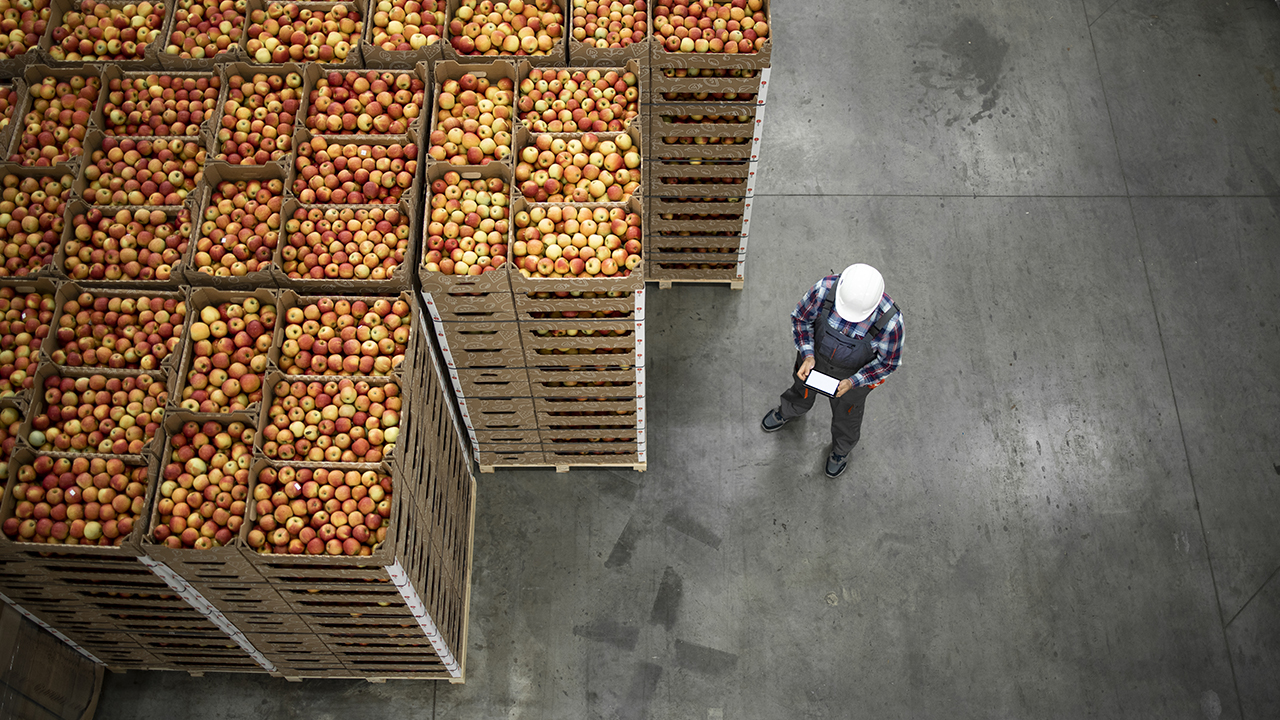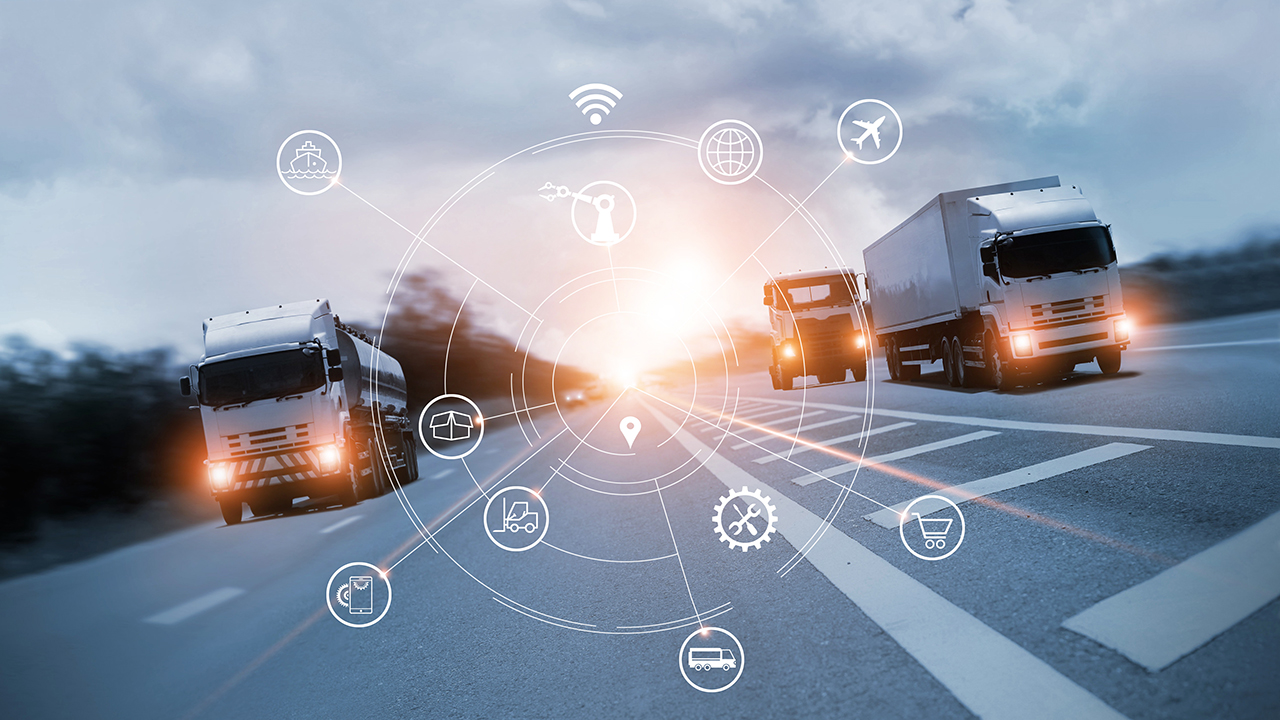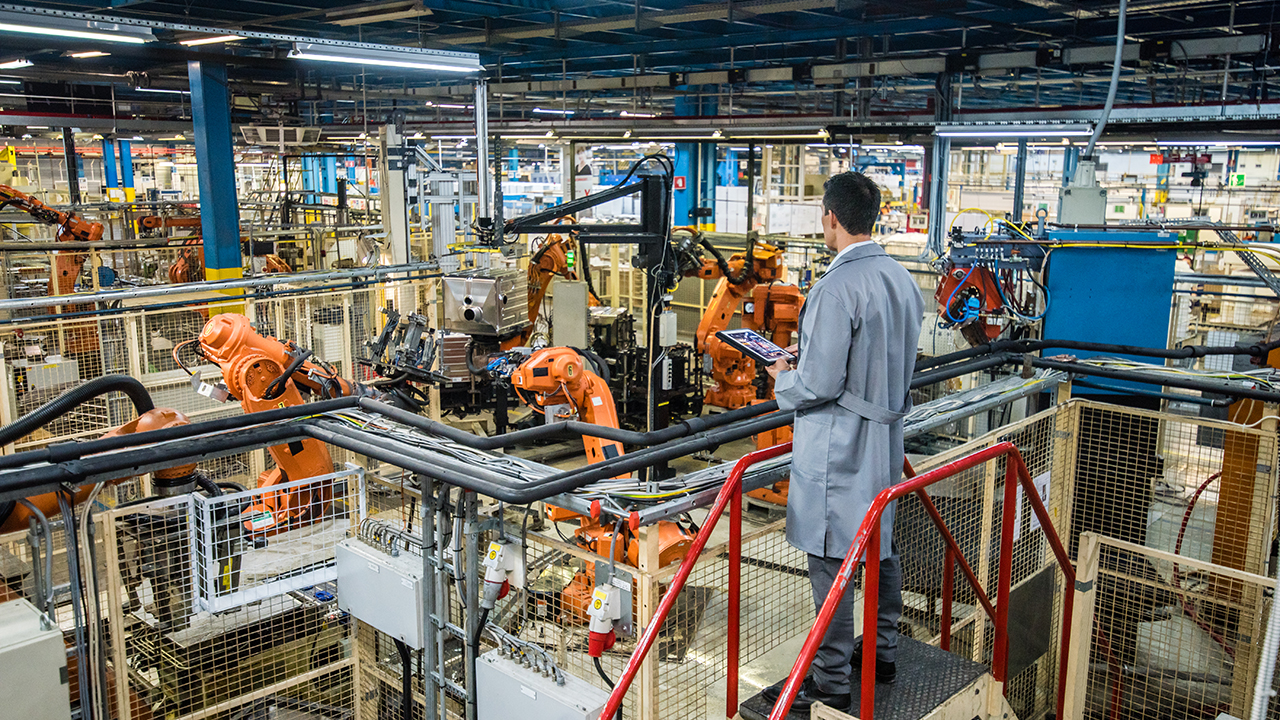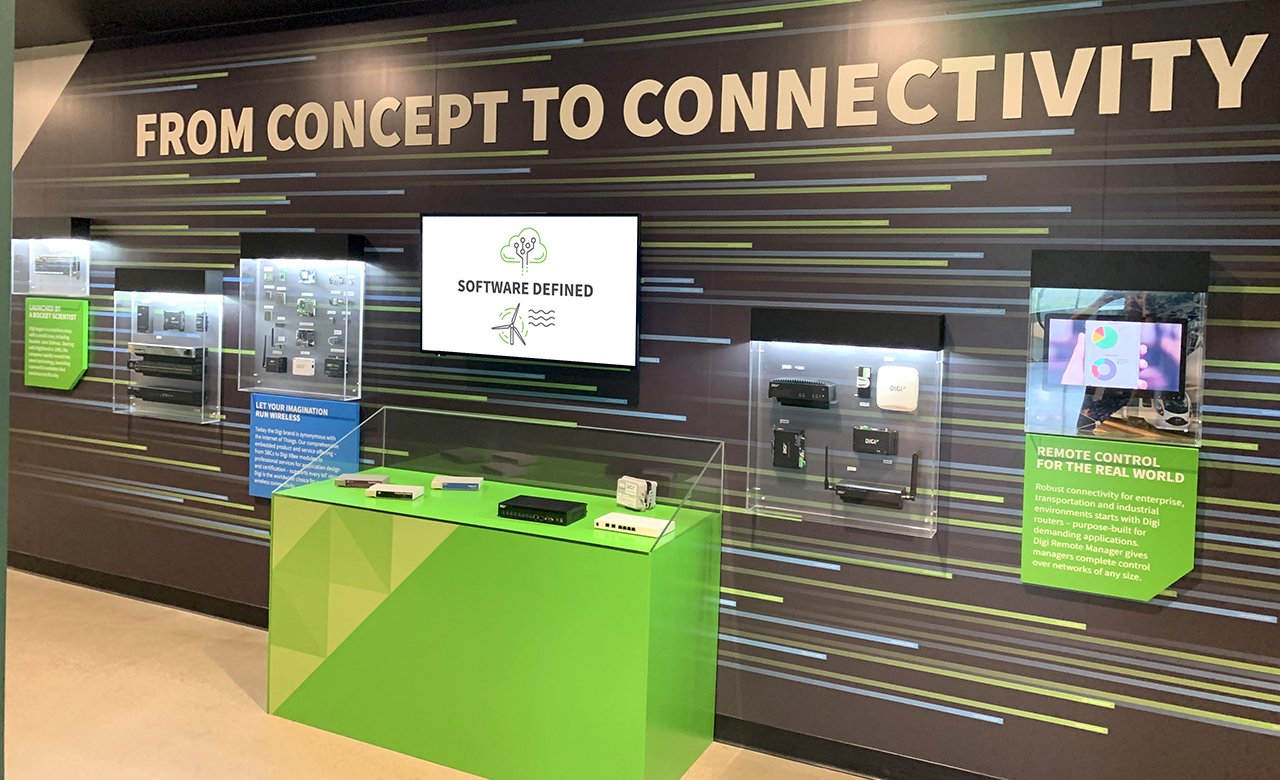IoT and the supply chain today go hand in hand, and in fact logistics tracking is one of the most prevalent Internet of Things sectors. Supply chain management is complicated and high-stakes — when something goes wrong, it often has cascading effects that affect entire industries. IoT supply chain technology can help managers from manufacturing to transport and delivery to monitor logistics and ultimately prevent bottlenecks in critical supply chain networks.
Every company wants to meet product delivery deadlines and quarterly sales goals, and efficiently run supply chains are valuable investments toward that end. But beyond that, when bottlenecks occur in
critical supply chains (such as pharmaceuticals, essential minerals, semiconductors and large-capacity batteries), these disruptions can devastate local, national and global economies.
Using IoT in supply chain management allows logistics partners to collect and use data for better inventory management, transportation and incident response. These capabilities set the stage for using machine learning models to create advanced, responsive supply management solutions that predict bottlenecks, save time and money and speed incident response.
How Can IoT Improve the Supply Chain?

Today, supply chains around the world are
struggling under surging demand, and many of these issues are primarily due to “worker shortages and a lack of key components and raw materials.” And while the COVID-19 pandemic has certainly exacerbated these ongoing issues, it’s likely exposed underlying issues rather than the root cause.
Deploying IoT devices across different parts of the supply chain — from manufacturing plant floors to transportation and distribution center inventory systems — offers visibility and data collection. Connecting these devices to
IoT device management platforms centralizes that visibility and delivers real-time insights where they’re needed most. And companies can use machine learning to develop smart supply chain IoT that maximizes supply chain efficiency.
Agriculture, the Internet of Things and the Supply Chain

To understand the impact of the internet on supply chain strategies, we can first consider the agricultural sector. Within the global supply chain, agriculture is among the
most complex industries to manage and support. Farms, ranches and commercial fisheries produce perishable raw materials that need to be processed, packaged and quickly shipped around the world.
Each of these operations need to: 1) monitor, maintain and repair specialized equipment, 2) keep track of fluctuating demand and market prices, 3) schedule and fulfill orders and 4) assess agricultural yields often affected by external factors.
How can IoT help prevent bottlenecks in agricultural supply chains?
- IoT devices can collect operational data that allows agricultural warehouses to automate inventory management and alerts for low supplies.
- Vehicles transporting perishable food need specific temperature controls and must satisfy requirements of the Food Safety Modernization Act (FSMA) — IoT applications can send alerts when container conditions don’t match specified parameters.
- Preventing food loss can avoid unnecessary spoilage and financial expenses, which is critical when supplies are limited or deliveries are time-sensitive.
- Smart agricultural machines can be remotely monitored to schedule and plan for more efficient and cost-effective equipment maintenance and repair.
Preventing Food Shortages with Smart Supply Chain IoT
By reducing waste, using IoT in distribution and agricultural inventory management can also limit food shortages. Researchers estimate food loss affects
24% of agricultural products during the postharvest phase of the supply chain. Today, IoT and device management platforms offer a promising solution to combating global food shortages and making the agricultural supply chain
more sustainable.
Application of IoT in Logistics and Inventory Management

Inventory management is an essential tool for operationalizing and optimizing every part of the supply chain using IoT devices. These systems ensure that raw materials, products and deliveries make it from producers to distributors and warehouses to end-users and customers.
The importance of
asset management in supply chain management really can’t be overstated. Without reliable data on their inventory, distributors and transportation companies would be unable to ensure their complex supply chain networks were operating properly. But often, when demand outstrips supply, the networks we rely on today struggle to respond quickly.
How IoT Supports Inventory Management
- Smart distribution centers and warehouses can reduce inventory management errors and keep accurate counts of raw materials and products.
- Using IoT for warehouse management means inventory data is updated in real time, tracking availability and limiting orders that can’t be fulfilled.
- Businesses can deploy machine learning models that learn from recurring patterns in IoT device data, optimizing processes and preventing avoidable shortages.
Retail Inventory and the Christmas Season
During the
2021 holiday season, 82% of retail executives had concerns about shortages, and 55% have prepared to shift to secondary suppliers. Traditional inventory management could make this process difficult to execute quickly enough to meet the season’s high demand. Using IoT technology, retail stores could instantly submit orders to distribution centers as soon as their inventory hit a minimum threshold.
Transportation and the IoT and Supply Chain

Whether materials or products are delivered in train cars, ocean shipping containers, trucks or cargo planes, transportation is what connects all the parts of the supply chain to one another.
And in the same way that IoT can improve warehouse inventory management, this technology can also improve visibility and optimize operations in the
transportation, logistics and trucking industry.
How can IoT streamline transportation in supply chains?
- Products often rely on multiple modes of transportation to reach their destination. IoT can provide real-time data that allows logistics systems to update shipping routes for maximum resource efficiency and faster delivery.
- Smart transportation systems can use IoT data to apply predictive analytics to routes, identifying recurring bottlenecks and issues in the supply chain that can be avoided or flagged to be fixed.
- IoT platforms can facilitate improved communication and information-sharing between suppliers, vendors and customers so transportation companies can know and plan for changes in supply or shipment orders.
- Temperature monitoring in shipping ensures perishable items maintain safe temperatures en route across the "cold chain" from manufacturing to warehousing and distribution.
Port Congestion in LA
When distribution centers and transportation hubs experience congestion (as occurred recently in the Los Angeles and Long Beach
ports in Southern California), many are ill-equipped to respond and adapt their management strategies in real time. These kinds of incidents can worsen ongoing product, component and food shortages and result in wasted resources, staff hours and dangerous port conditions.
Data collected from IoT devices can inform shipping container management strategies and automate manual processes. This would help speed delivery unloading and decrease the time it takes containers to be delivered and ships to dock and exit crowded ports.
Machine Learning and IoT in the Supply Chain

As we’ve already touched on, the growing prevalence of IoT devices provides an exciting opportunity to apply machine learning to build responsive supply chains.
IoT and machine learning use cases often overlap, and these technologies are connected in many ways:
- Both provide value through real-time data collection, often for industrial, logistics, technology, energy and other sectors.
- IoT devices provide a way to collect that information, while machine learning models process that data, providing insights that organizations can act on.
- The value organizations get from using IoT and machine learning technology can depend on having access to the low latency, high-bandwidth connections that 5G networks provide.
- Data collected from IoT devices and platforms often requires processing through machine learning models for meaningful results and insights to be gleaned.
How Machine Learning Can Reduce Supply Chain Bottlenecks

As global agriculture, manufacturing, logistics and transportation industries improve and integrate their
IoT software and services, machine learning can use IoT data to predict increased demand and supply shortages. These capabilities support faster decision-making, whether part of an automated, integrated system or sending alerts that require human intervention.
Helps Predict Future Bottlenecks

Machine learning is a powerful tool that organizations can apply to their most pressing operational challenges —
machine learning applications can process enormous volumes of data, identify patterns and use those insights to predict what happens next.
When applied to supply chain management, these applications create responsive supply chains that predict and prevent future bottlenecks.
The advantages of responsive supply chains (built with machine learning) include:
- Cutting logistics and transportation costs with shipping routes that maximize flexibility in case of an emergency.
- Predictive maintenance and repair schedules for valuable equipment.
- Real-time decision-making to prevent geographic supply shortages based on data from multiple systems.
- Monitoring that helps make sense of massive amounts of data from thousands (or even millions) of IoT devices across the supply chain.
Reduce Costs and Response Time

Effective machine learning models can compile
data shared across systems and derive insights using information from multiple sources. In supply chains, being able to make data-driven decisions based on retail or customer inventory, production timelines from manufacturing plants, shipment tracking information and even more.
Integrated into IoT applications and platforms, machine learning can help decrease long-term costs for supply chain management and — if something does go wrong — reduce response times by:
- Using logistics data to plan cost-effective shipping routes while meeting delivery targets.
- Quickly adjusting orders and deliveries to new supply chain conditions, such as blocked routes, supply shortages or fluctuating market prices.
- Applying predictive analytics to plan suitable alternative routes in case of unplanned but foreseeable roadblocks (e.g., weather, port congestion, staff shortages).
Asset Management and Maintenance

IoT technology and machine learning can also be used to improve how agriculture, manufacturing, distribution and logistics companies maintain and repair their equipment.
Certain segments of the supply chain are almost always operating, so equipment malfunctions or unplanned downtime can be costly. Machine learning and AI support critical predictive maintenance requirements, enabling enterprises to identify the factors that can lead to failure, automate service tickets and address challenges before they result in downtime.
Organizations across the supply chain can use machine learning applications to:
- Process thousands of data points to monitor and assess equipment performance.
- Reduce equipment downtime by scheduling maintenance work and repairs during times predicted to have lower demand or traffic.
- Monitor, adjust or respond to equipment or environmental conditions that fall outside safe operational parameters, preventing equipment failure or workplace injuries.
Transparent Monitoring

IoT devices can help organizations gather on-site data they’ve never had access to before — but in reality, the volume, variety and speed of data generated often make it difficult to use that information before it’s become irrelevant.
Machine learning provides real-time visibility into what’s going on in organizations’ equipment, delivery networks, inventory and more.
- Machine learning applications can help process massive amounts of data and distill it all down to what’s important now, what’s likely to happen next and what steps to take based on that insight.
- This level of visibility gives organizations the ability to respond to changes quickly and share real-time information with supply chain vendors, partners and customers.
- Multiple organizations can use connected systems that rely on machine learning-based IoT applications to better respond to direct and indirect impacts on their productivity.
- Transparent monitoring not only supports supply chain management on an organizational level but can also improve its function across an entire industry.
The Future of IoT in Supply Chain Management

As telecommunications providers built out their 5G networks, the use of edge computing solutions in supply chain management will quickly make it even easier to gather, process and act on data from IoT devices. This promising future will make a variety of
advanced use cases more broadly accessible, such as:
- Assessing manufactured products for defects or damage.
- Verifying product authenticity at every stage of the supply chain.
- Providing shareable visibility across supply chain networks for both commercial entities and consumers.
- Building smart warehouses with efficient inventory management.
- Reducing supply chain costs, product and raw material waste and transport congestion.
Explore the Advanced Capabilities of Digi’s IoT Solutions

Understanding the Internet of Things in manufacturing today and how technology has changed supply chain management provides insight into the improvements that have yet to come. The current intersection of IoT and supply chain management solutions isn’t new — it’s the next phase in a long line of technology advancements that have gradually progressed the industry to this point.
But the leap that many organizations are making — connecting their IoT devices onto centralized management platforms — are poised to dramatically improve the health and function of the global supply chains every industry relies on.
Contact us to start a conversation about your IoT requirements. Or visit us online to learn more about
Digi IoT solutions and
SmartSense by Digi control point solutions, and how they can help relieve supply chain bottlenecks today.